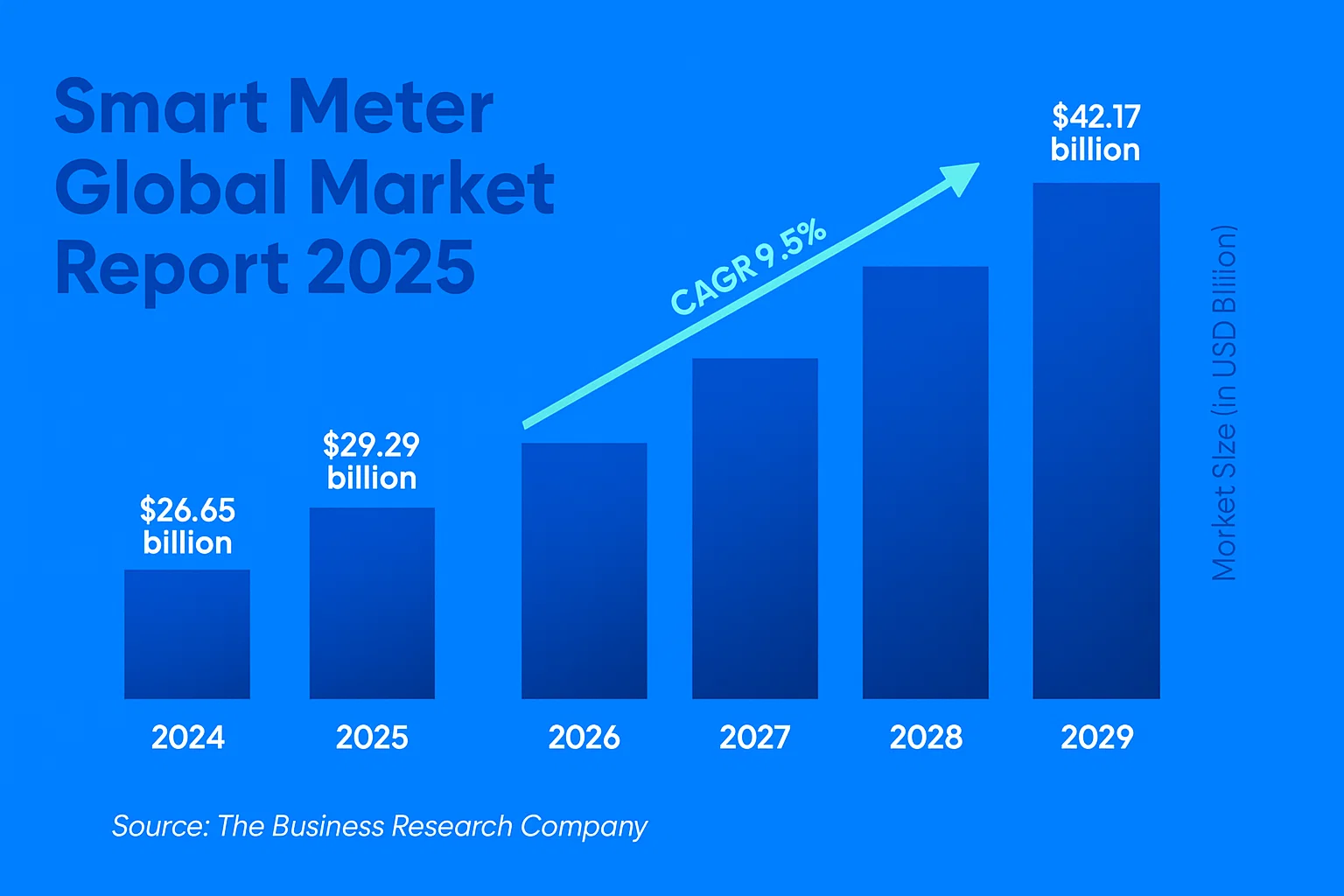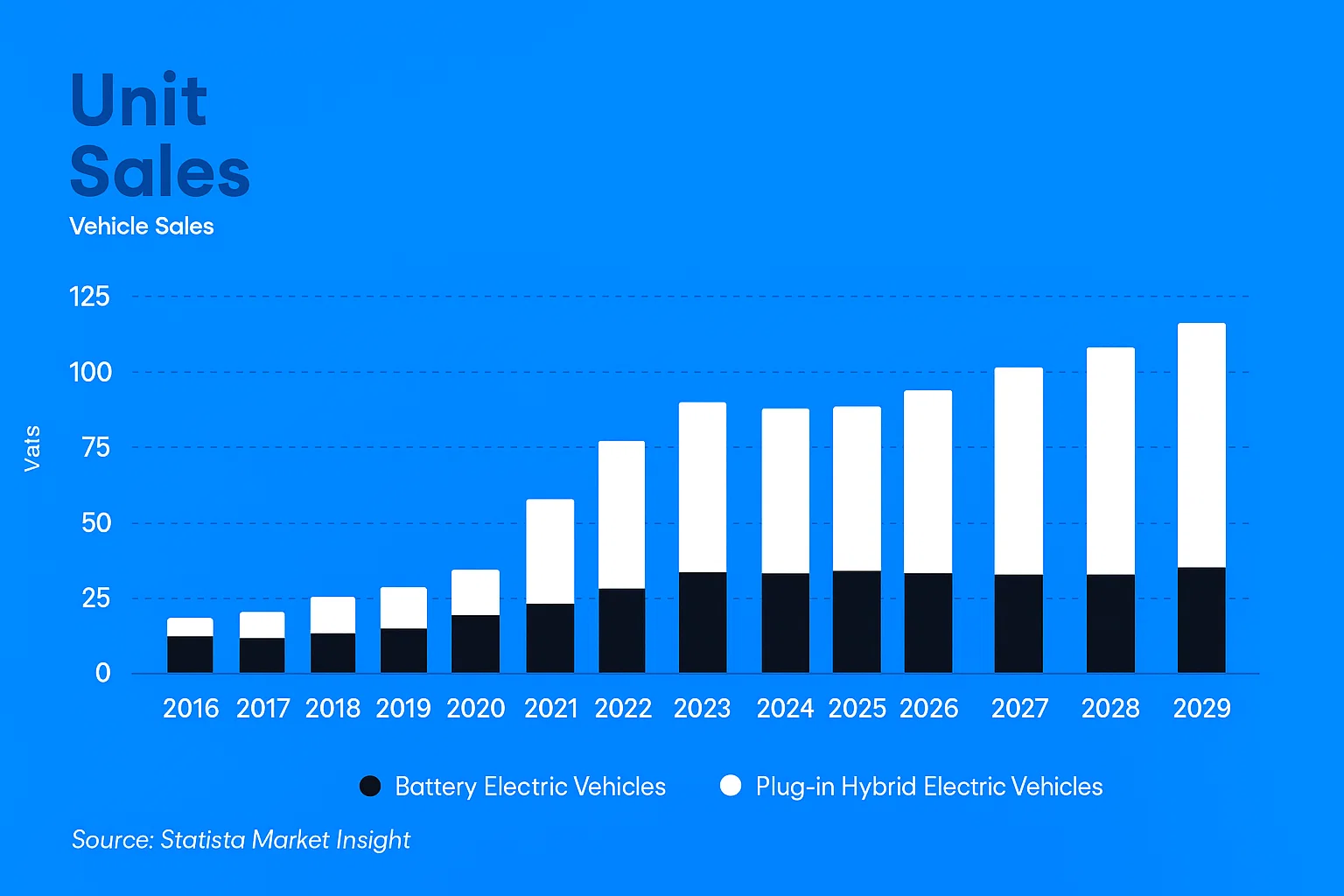Energy Transition Landscape: What, Why, and Who’s Driving the Growth?
Published on 29 April 2025


The global energy ecosystem is at a pivotal crossroads—driven by ever-increasing electricity demand, a definite shift to renewables, and rapid digital innovation. As cities, industries, and individuals increasingly rely on electrification for economic growth, we must question whether current systems can sustain this fast-paced evolution. Technologies like advanced metering infrastructure (AMI), AI analytics, and energy storage aren’t just technological upgrades—they’re reshaping age-old energy production, distribution, and consumption patterns. Now is the moment to examine these transformative trends and their profound impact on our shared future toward a more sustainable world.
In this article, we present data-backed insights that highlight the rapid transformation of the energy landscape during 2024–25.

What economies are leading the demand?
Developing nations will account for 85% of new electricity demand, with China experiencing the most significant growth since 2020
Who’s driving the growth?
Industrial sectors dominate global electricity usage, followed by residential and commercial segments
How quickly is demand rising?
The IEA projects global electricity consumption to rise at an average of 4% annually through 2027, driven primarily by expanding power-intensive sectors.
For complete insights on global electricity trends, read Ember’s full article here.

Which renewables are leading the shift?
By 2025, renewable electricity generation will surpass coal-fired generation. Wind and solar power will individually exceed nuclear power by 2026, with solar PV set to become the largest renewable source by 2029 and wind the second largest by 2030.
Why does this matter?
Increasing reliance on renewable energy in power generation, heating, and transportation is essential for limiting the rise in global temperatures.
How fast is renewable energy growing?
IEA predicts global renewable electricity generation to reach 17,000 TWh by 2030—an almost 90% rise from 2023, enough to meet the combined power needs of the U.S. and China.

Which regions are leading adoption?
North America leads in smart electricity meter adoption with a massive 77% market share, followed closely by select East Asian regions and EU countries. Latin America, however, has lagged significantly behind.
Where is future growth expected?
Latin America, South Asia, and Africa are the regions showing strong potential due to government efforts to modernize outdated grid infrastructures and establish supportive regulatory frameworks.
Additionally, smart water and gas meters are expected to grow significantly by 2030, with a CAGR of 16% and 10%, respectively.
How widespread are smart meters today?
By the end of 2023, the global installation of smart meters (electricity, water, and gas) reached 1.06 billion, with smart electricity meters capturing 43% of the global electricity meter market.

Why is energy efficiency essential?
Often called the “first fuel,” energy efficiency is critical for cutting CO₂ emissions, reducing energy costs, and improving energy security. Yet, global efficiency improvements reached only around 1% in 2024—far short of the 4% annual target required for net-zero goals.
How effective are current efforts?
Despite record investment, global energy-saving progress remains slow at approximately 1% annually. Technologies like electric vehicles, fuel-efficient transportation, and advanced building insulation show promise but need broader adoption.
Who’s taking the lead?
Countries representing over 70% of global energy use have strengthened efficiency policies amid recent energy crises. The EU mandates zero-emission new buildings by 2030, China has ambitious energy-saving targets, the U.S. has updated vehicle standards, and India is accelerating electric vehicle adoption.

Where is AMI growing fastest?
The Asia-Pacific region led global AMI adoption in 2024 and is expected to remain the fastest-growing market, driven by rising electricity demand, energy efficiency goals, and supportive government policies.
What’s driving this shift?
Increasing global reliance on advanced metering for utilities, such as electricity, water, gas, and heating, is accelerating market expansion. Experts project the AMI market could reach around US$ 41.35 billion by 2029, underscoring its critical role in energy transformation.
How big is the AMI market today?
In 2024, the global Advanced Metering Infrastructure market was valued at approximately US$ 19.07 billion, with predictions indicating rapid growth to nearly US$ 22.32 billion by 2025—a remarkable 17% annual increase.

Why is energy storage essential?
Grid-scale storage systems store power for use during peak demand. While pumped hydro remains dominant, battery storage is rapidly gaining ground due to its flexibility and scalability.
Who’s leading the charge?
The U.S. and China spearheaded battery storage installations in 2022. Global investment in this sector surged past US$20 billion in 2022 and was projected to exceed US$35 billion in 2023, with many nations rolling out supportive policies and incentives.
How fast is battery storage growing?
By the end of 2022, global grid-scale battery storage reached 28 GW, with 11 GW added that year alone—a 75% jump over 2021. To meet net-zero goals, capacity must soar to 970 GW by 2030, requiring an average annual addition of 120 GW.
Read in detail how battery energy storage can power us to net zero

What does the future hold for EV sales?
Unit sales are forecasted to reach 17.36 million vehicles by 2029, with the average vehicle price estimated at around US$57.4K in 2025.
Who’s leading the EV race?
China is set to dominate with US$377 billion in EV sales by 2025. While China leads in volume, countries like Norway are setting global benchmarks in EV market share, highlighting the worldwide acceleration in electric mobility adoption.
How big is the EV market getting?
By 2025, global revenue from the Electric Vehicles market is expected to reach a staggering US$784.2 billion, with projections rising to US$990.4 billion by 2029, driven by a CAGR of 6.01%.
Discover how electric vehicles are gaining momentum globally and reshaping electricity demand.
As global electricity demand surges, the question isn’t whether we’ll adapt, but how boldly we’re willing to reimagine the future of energy. Undoubtedly, the energy sector is undergoing a profound shift. At the heart of this transformation lies the rapid integration of smart grid technologies, electrification, and renewables. From AMI to AI-driven analytics, these innovations are doing much more than optimizing energy use—they’re redefining what efficiency and resilience mean in a connected world. With EV infrastructure and energy storage scaling rapidly, the vision of a sustainable, self-healing grid is closer than ever.
If the numbers are any indication, the opportunity ahead isn’t just real—it’s massive. Energy transition is no longer a choice but a necessity for any meaningful economic development.
Learn more about how Kimbal is making accessible ‘Efficient Energy Everywhere.’
Kushal Smart Meters
Vaani: A Head-End System built on open architecture
ImGATI: In-meter Gateway Addressing Transfer of Information
Network Interface Cards
Kimbal has deployed more than 2.5 million smart meters—complete with RF-mesh communication modules and a flexible architecture Head-End System—while sustaining 99 % SLA. A further 12 million-plus integrated AMI endpoints are now being rolled out in support of India’s flagship Revamped Distribution Sector Scheme (RDSS).
Your email address will not be published. Required fields are marked *